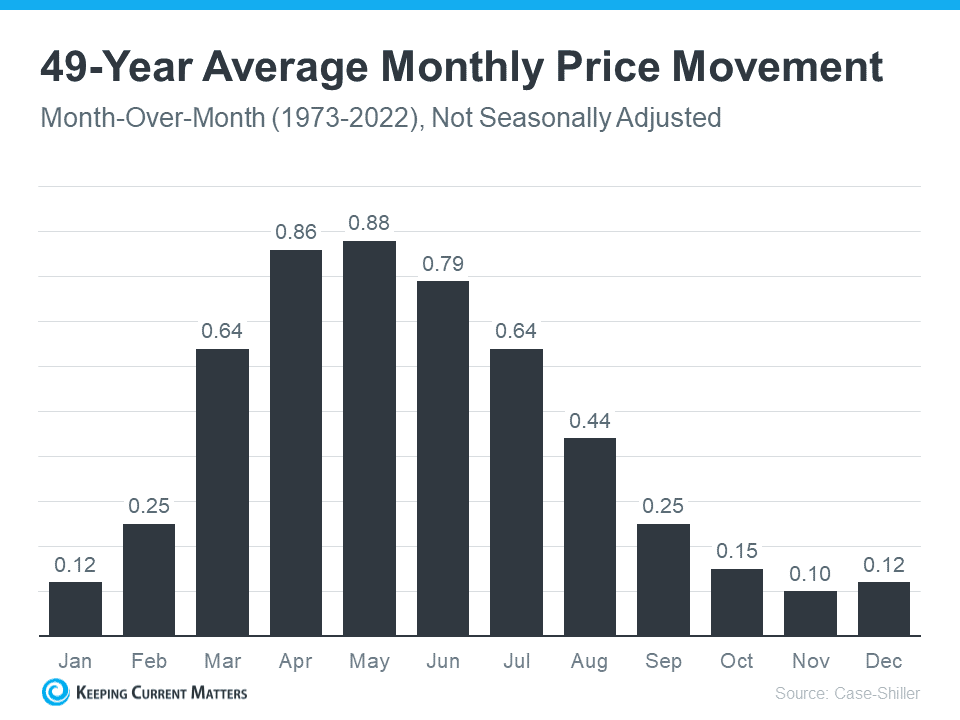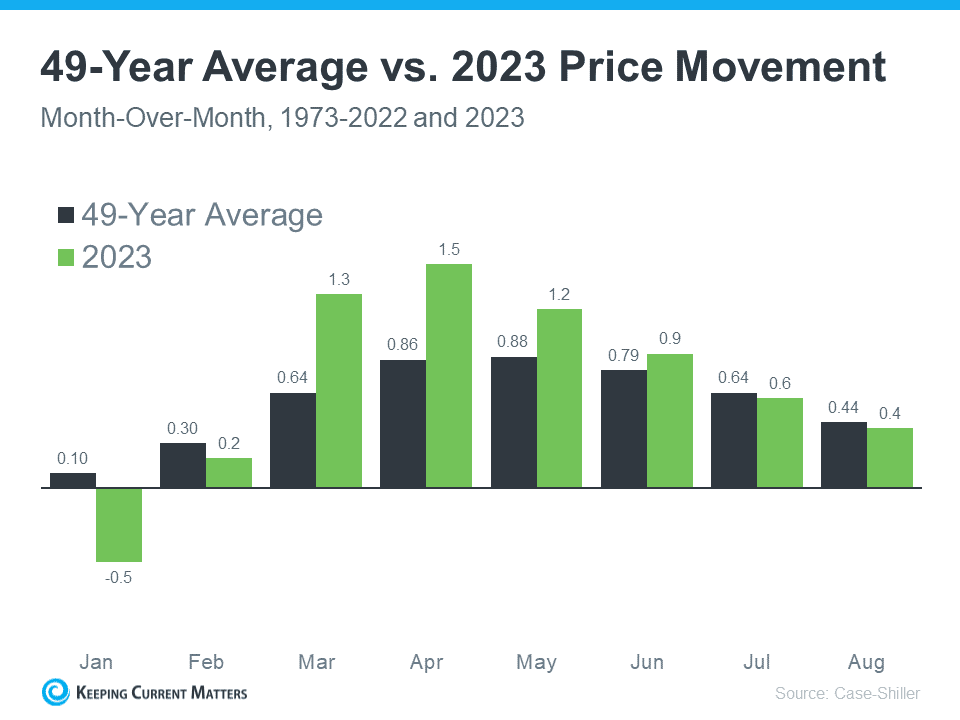If you find yourself a bit unclear about the current state of home prices, you're not alone. There's some misinformation circulating, with some individuals incorrectly asserting that prices are on the decline, contrary to reliable data. This misunderstanding is partly fueled by unreliable sources of information and, at times, by media coverage that misrepresents the true findings of the data.
To provide clarity, let's simplify things and focus on the essential information backed by trustworthy data.
Understanding the Regular Fluctuations in Home Prices
In the real estate market, we observe consistent patterns known as seasonality, where there are anticipated fluctuations throughout the year. Spring emerges as the pinnacle of home buying, marked by heightened market activity. This momentum tends to persist into the summer, gradually tapering off as the cooler months approach.
Home prices align with these seasonal trends, reflecting the principle that prices experience the most significant appreciation when demand is at its peak. Consequently, a reliable and long-term trend in home prices emerges. The graph below utilizes data from Case-Shiller, showcasing the typical percentage change in monthly home prices from 1973 through 2022 (without adjustments, allowing for a clear view of seasonality).

According to the data, at the start of the year, there is an increase in home prices, albeit not as pronounced as during the spring and summer markets. This is attributed to the lower activity levels in January and February, as fewer individuals tend to relocate during the cooler months. As the market transitions into the peak homebuying season in spring, there is a noticeable uptick in activity, leading to a more significant rise in home prices. Subsequently, as fall and winter approach, prices continue to increase, albeit at a more gradual pace, reflecting a decline in overall market activity.
This Year, Seasonality Has Returned
Now, let’s look at how this year compares to that long-term trend (see graph below):
Here is the most recent data for this year from the same source. Similar to before, the dark bars depict the longstanding trend, while the green bars illustrate this year's developments. Noticeably, the green bars are aligning more closely with the typical market patterns, signifying a positive shift towards a more sustainable pace of price growth compared to recent years.
To sum it up, national prices are not decreasing; rather, there is a normalization of price growth. It's essential to be aware that there's a possibility the media might misinterpret this deceleration in home price growth as an actual decline in prices. Therefore, it's advisable not to entirely rely on headlines. The data presented here provides the necessary context to truly comprehend the situation. If you come across confusing headlines, consider consulting a trusted real estate professional for accurate information.
Remember that it is typical for the rate of home price growth to decelerate as the year progresses. It's important to note that this slowdown does not indicate a decline in home prices; rather, they are increasing at a more measured pace.
In summary, home price appreciation is reverting to typical seasonal patterns, which is a positive development. Should you have inquiries about the current price trends in your local area, feel free to reach out to a real estate professional for guidance and assistance.








